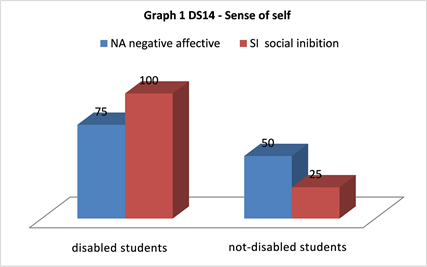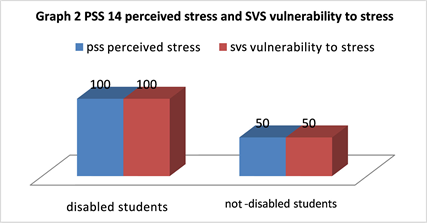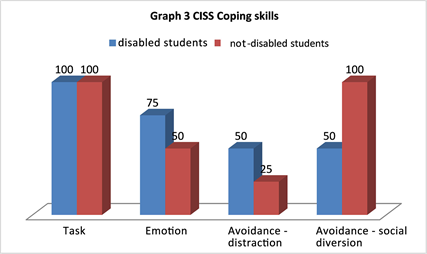Mindfulness for Disabled University Students—A Sporting-Motor Activity and Meditative Workshop Aimed at Reducing Stress and Increasing Coping Resources ()
1. Introduction
Mindfulness is an approach that has the primary objective of making people aware of their own feelings and the subsequent corporeal “re-education.” Therefore, it is characterized by two closely related components: 1) the ability to focus attention on the present (self-regulation of attention) and 2) the attitude with which this is done, with curiosity, openness, and acceptance. Together, these components allow a person to relate to their own experiences in a mindful way (with awareness, welcomeness, and acceptance) (Siegel, 2007, 2010; Halliwell, 2010; Amidei & Traverso, 2013) .
Additionally, the subject of mindfulness is strictly connected to wellbeing, and numerous scientific studies show how much physical exercise can be effective in promoting physical and mental health, so that it is becoming increasingly widespread. Whenever a physical activity (even a simple one, such as running) transforms itself into an activity in awareness, it immediately improves the quality of the exercise itself by increasing the potential for mental health in a person and obtaining the maximum benefits. The essential thing is not to focus on performance but rather on moving the body for the pleasure of doing so, while being aware of it.
Specifically, mindfulness in a sports/motor activity context can be useful for
- Improving the capacity for concentrating the body and mind. Each sporting/motor activity requires the awareness of one’s own mind and body in the present moment;
- Achieving increased ability, through improving the integration between the body’s internal proprioception; a more refined sensory awareness; and pure consciousness that is not identified by its contents: thoughts, images, emotions, etc.
- Becoming more aware of the meaning of the dynamic relationship between the position of the body, physical sensations, emotions, thoughts, the quality of one’s mental state and of the environment, or of the relational context in which they find themselves;
- Being more reliant on the “intuitive body,” to improve and enhance performance. To analyze movements with the thinking mind and attempt to control the body through deliberate intent (Kabat-Zinn, 2003, 2014) .
Mindfulness has been applied in various social contexts, even academic, across different experiences with university students; it has been used especially for stress-reduction purposes (Palmer & Rodger, 2009; Regehr et al., 2013; Gallego et al., 2014) , but also to improve self-esteem (Iskender, 2009) and resilience (Pidgeon & Keye, 2014) , in order to improve subjects’ perception of their own quality of life (Van Gordon et al., 2014) .
We have found no specific documentary studies for disabled university students. We have only identified some studies focused on adolescents with learning disabilities (Beauchemin et al., 2008; Troia et al., 2009) .
In view of the above, the value of practicing mindfulness in a sporting/motor and meditative context focused on those with disabilities is clear, insofar as a highly increased activation of the arousal of the emotional dimension is generally present in these specific cases. Moreover, co-morbidity with stress and social difficulties is almost always present in the greater part of these cases.
Therefore, the objective of this study is to evaluate if a disabled person is less able to handle stressful situations and emotional problems than those without disabilities, and to outline a course in mindfulness to the university aimed at increasing the students’ capacity to cope with stress through the qualitative and quantitative increase in their coping skills.
Another objective is to initiate a first experience of a workshop in mindfulness with university students with varying disabilities, seeing that, as already mentioned, in national and international literature, we only came across experiences with adolescents with learning disabilities.
The workshop took place for six-month period at the University of Salerno (Italy) sports facility and it was applied the stress-reduction protocol of Mindfulness theory.
Only the pre-test data collected before the start of the workshop activities will be submitted at this point, while that of the post-test will be presented during the development stage.
2. Methodology
Participants and procedure
Eight university students: four with disabilities (two visual, one motor, one mild intellectual) and four without disabilities who participated in the mindfulness workshop activities at the University of Salerno (Italy) sports facility. The meetings took place once a week over a six-month period.
Tools
DS-14: Test for evaluating personality type (composed of two subscales: NA-Negative Affectivity and SI-Social Inhibition). It is a 14-items self-report questionnaire.
PSS: Scale for measuring perceived stress. It is a 10-items self-report questionnaire.
SVS: Scale for measuring vulnerability to stress. It is a 20-items self-report questionnaire.
CISS: Scale for measuring multidimensional of the types of coping styles. It is a 48-items self-report questionnaire.
3. Results
From the analysis of the data, students with disabilities appear to have a more negative sense of self (75%) and increased social inhibition (100%) than those without disabilities (see Graph 1). They also show very high levels (100%) of perceived stress and vulnerability to stressful episodes. The data for the students without disabilities shows, in this case, much lower figures, equal to 50% (see Graph 2).
With regard to the methods of handling stress through coping skills, the CISS measures three types of coping styles: 1) Task: purposeful task-oriented efforts and aimed at solving the problem; 2) Emotion: reactions that are self-oriented; 3) Avoidance: activities and cognitive changes aimed at avoiding the stressful situation. There are two subscales, Distraction and Social Diversion1.
The students with disabilities use task (100%), emotions (75%) more; avoidance-distraction (50%) and avoidance-social diversion (50%) less (see Graph 3).

Graph 1. DS14―Sense of self.

Graph 2. PSS 14 perceived stress and SVS vulnerability to stress.

Graph 3. CISS Coping skills.
The low social diversion is evidently explained because our disabled interviewees expressed a high level of social inhibition, things commonly attributed in the literature to the conditions of the disability.
From this pre-test data, it was, therefore, considered much more useful to conduct the mindfulness workshop, given that the disabled students interviewed show evident signs of distress, vulnerability to stress, and difficulty in their sense of self and in social interaction, and scarce positive coping strategies.
The processing of the post-test data will be able to quantitatively support the observations of this phase and highlight if the practice of Mindfulness can foster a positive change.
4. Outline of the Mindfulness Workshop
The workshop was inspired by the study by Jon Kabat-Zinn (2003) Mindfulness-Based Stress Reduction (MBSR) (Caruso & Di Nuovo, 2016) , which developed a stress-reduction protocol.
The most-used formal practices of awareness were
1) the body scan;
2) mindfulness movement: walking meditation, Hatha Yoga;
3) seated meditation.
Let us look at them in detail.
4.1. Abody Scan
Siegel (2007) consists of intentionally focusing attention on the physical sensations in different parts of the body from moment to moment, while suspending judgment (starting from the big toe of the left foot and concluding at the top of the head after passing over the entire body).
Through this practice, the participants learned to
・ connect with the direct experience of physical sensations and, therefore, access an immediate and intuitive awareness―in order to cultivate the capacity to bring awareness and to perform and gently investigate the sensations as they occur, while attention moves on to another part of the body.
・ intentionally hold their attention in a certain place and in a certain way. Through a body scan, attention can be directed and focused where it is wanted and engaged and disengaged deliberately, while it moves through the body. It has developed the capacity to concentrate and the flexibility in how attention is brought to the experience.
・ connect in such a way as to let your mind wander. During the body scan, the students learned to manage thoughts and feelings, realizing where the mind directed itself and bringing it back to where they wanted.
・ let things be as they are. Practicing “being with” physical sensations as they are made it possible for them to make an informed choice between what to pursue and what could possibly remain as it is (Siegel, 2007) .
4.2. Mindfulness Movement
It is usually drawn from Hatha Yoga poses but can also draw from disciplines such as Qigong or Tai Chi. Hatha Yoga incorporates the awareness of breathing and of various poses in addition to the physical sensations associated with muscle strain and relaxation.
Students were taught the practice of Walking Meditation: being present and aware during each step, walking for that sole purpose with no destination. It consists of gradually focusing non-judgmental attention on the sensations in the soles of the feet as you walk back and forth in a defined space.
Practicing mindfulness leads to an understanding of the following:
・ Re-learning how we are able to focus attention and be aware of bodily experiences. This allows us to become grounded in the bodily sensory experience and, therefore, diverts us from unnecessary ruminative thinking.
・ Experiencing an awareness of the body in motion, by providing a connection between the experience of exercise and everyday life, while creating the knowledge of the bodily movements that take place.
・ Embodying the experience of life through movement and poses. Examples of the parallels with everyday life that this exercise provides are as follows: poses for balance (We experience the fact that balance is not obtained by remaining still, but dynamically. In the same way, balance in life is seen as a process rather than a point to be reached); sidelining our habitual tendencies (for example, see the effects of “trying”―experiencing how often we contract the various parts of our body, even when they are not being used for whatever activity we are performing at the time); discovering new ways of working with intensity (to reach an awareness, in the moment, of physical sensations, learning to honor and respect what is good for our body at any given time); to experience an acceptance of the present (in this way, we can discover ways of honoring what is right for us at any given time and to feel more able to take responsibility and make decisions to take care of ourselves) ( Kabat-Zinn , 2003,
4.3. Seated Meditation
Students were invited to sit on a chair, a cushion on the floor, or on a meditation stool, and to bring the body into a posture that was simultaneously erect and relaxed in an aware manner. This provided an “experienced sensation” or an embodiment of the internal qualities they were developing, a rigid and relaxed awareness.
Through this practice, the participants learned to
・ further develop their ability to “be at one” with bodily experiences;
・ bring their mindfulness skills into their everyday lives;
・ calm and rest the mind;
・ develop a new relationship with experiences;
・ understand how the mind operates ( Kabat-Zinn , 2003,
5. Post-Workshop Observations
The application of mindfulness through meditative techniques and sporting/motor exercises has sown the seeds of a sense of discovery, adventure, and curiosity in the participants, encouraging them to live in a mindful way.
Obviously, difficulties have arisen since the start, since mindfulness is not a quick solution but, as with any new skill, has a learning curve, and the rewards are not always immediate. When it was suggested during the first meetings that we slow down and observe the body with some techniques, some students did not always enjoy the results: they were experienced as pain, anxiety, impatience, anger, or sadness. We then came to the awareness that emotions can be developed and experienced as they arise, without persisting in trying to change them or reject them.
Unlearning old habits in order to develop new ones requires effort and patience. The participants were advised, therefore, to commit to meditating each day, even if only for a few minutes whatever their state of mind. That was not an easy objective, especially for disabled students, who experienced great difficulty in sustaining meditative concentration as a state of intolerance and inadequacy immediately arose in them, and also of low self-esteem. We clarified, as a group, how a caring attitude toward each other is the key to acceptance and to living a peaceful life. We explained that mindfulness cannot be such without kindness; each time we hear the slave-driver’s voice criticizing us or accusing us of failing at meditation, we can use it as a reminder to open ourselves to kindness. “Curiosity” was another key word that guided various sessions, stimulating the participants’ interest in what had actually occurred through employing their senses: sight, hearing, smell, taste, and touch, without limiting their visions, looking at new territory using old maps.
Additionally, practicing acceptance allowed a gap to be created between an experience and a reaction. This allowed to eliminate the stress of living on autopilot ( Kabat-Zinn , 2003,
6. Conclusion
In conclusion, by analyzing the our experience, while acknowledging difficulties in concentration, emotional blocks, and the hard task of acceptance, the group of students gained a good understanding of the importance of total cooperation with the inevitable, or rather of working together with events in a sympathetic way.
We believe we have achieved a fundamental objective of mindfulness, that is to say of being aware that its practice can be useful as a means of accessing a more viable way of being in the world, of being open to change and letting go of things by attempting to intervene in events only if truly necessary. In fact, we observed a change in the way the disabled students (but also, in general, those without disabilities) interpreted the world, namely in a less emotional way, with a greater acceptance of their difficulties, a reduction in stress in tandem with the implementation of various coping strategies, an improvement in their sense of self and in their social interactions.
Research Agenda
The processing of the data collected at the end of the mindfulness workshop and comparison of pre- and post-test data.
NOTES
1See the web-site: https://www.pearsonclinical.co.uk/Psychology/ChildMentalHealth/ChildMentalHealth/CopingInventoryforStressfulSituations(CISS)/PDFReports/Technical.pdf